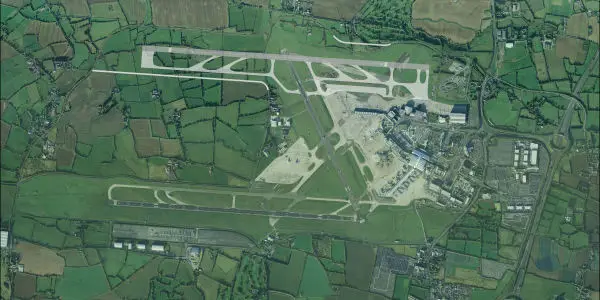Dublin Airport chiefs have offered to buy at least 40 homes as they push ahead with plans for a second runway by 2020.
Aviation bosses said the deal for homeowners worst affected by noise and flight paths will be kept on the table for at least one year.
The 320 million euro runway project was first given the green light in 2007 and management is now examining options to reverse tough planning restrictions on take-offs and landings between 11pm and 7am.
Forty homes suffering the greatest noise disruption have already been identified and another set of homes close to the airport will be offered specialist insulation.
Meetings have been arranged with residents’ associations from Portmarnock and St Margaret’s to assess demand.
“We are going to work very closely with the residents,” a spokeswoman for the Dublin Airport Authority (DAA) said.
“There is a number of mitigating measures which we put forward as part of the planning application back in 2007. We will be honouring that.”
The cost for the home buy-up scheme has not been estimated but the DAA said it would pay “full market value” based on independent assessments.
The 3,110 metre runway will be built 1.6km north of the existing main runway and airport bosses estimate it will help create 31,000 jobs over two decades.
The DAA said compulsory purchase orders will not be used in the expansion as the airport secured the necessary land bank in the 1970s when the idea was first floated.
Aviation chiefs identified houses for purchase by assessing exposure to noise from planes in homes and schools.
Tests were carried out during the day and night along places at the same height over 90 days of the airport’s busiest months from June to September.
They were recorded on contours on a map and took into account the types of aircraft, the flight paths and other factors.
Areas hit by noise of 63 decibels will be offered insulation and people in homes affected by 69 decibels will be offered relocation.
The DAA said the scheme was in line with international practice.
The Portmarnock Residents’ Association is meeting airport bosses on Monday for talks on the expansion plans and the potential buy-outs and insulation offers.
Kevin Toland, DAA chief executive, said the airport’s runway infrastructure is currently at capacity during peak hours.
“We are very conscious of balancing the national and business needs with those of our local communities and we will continue to work closely with our neighbours in relation to this project,” Mr Toland said.
Conditions three and five of the original planning permission would severely reduce future operational capacity of the airport at key periods.
They include a ban on take-offs or landings on the new runway from 11pm to 7am, which would affect two of the busiest hours of the day – 6am-7am for departures and 11pm to midnight for arrivals.
The second condition restricted the average number of take-offs and landings at the airport between 11pm and 7am to 65.
At the time the average was already 72 and it is now 99, meaning flights would be cut by one third during the eight night-time hours if the runway is built under the current planning order.
“It’d be akin to putting a lane on the M50 and not being allowed to use it,” the spokeswoman said.
The entire project was put on hold in 2008 because of the recession.
Construction is now scheduled to start in 2017 and about 1,200 people will work on the building project.
It is billed as the key expansion needed to cement Dublin as a North Atlantic hub for long-haul operations, an idea repeatedly floated by International Airlines Group when it was buying Aer Lingus.
Passenger numbers recovered significantly as the economy has begun to improve and last year was the busiest in the airport’s history, with 25 million people passing through.
The DAA said passenger numbers continue to grow strongly this year, with double-digit growth recorded in January and February.
It said almost 50 new routes and services have been added to schedules in the last two years, along with significant increases in capacity on a number of existing routes and nine new airlines operating at Dublin.
Mr Toland said a second operating runway has the potential to open up connections to a range of long-haul destinations, particularly Asia, Africa and South America.
